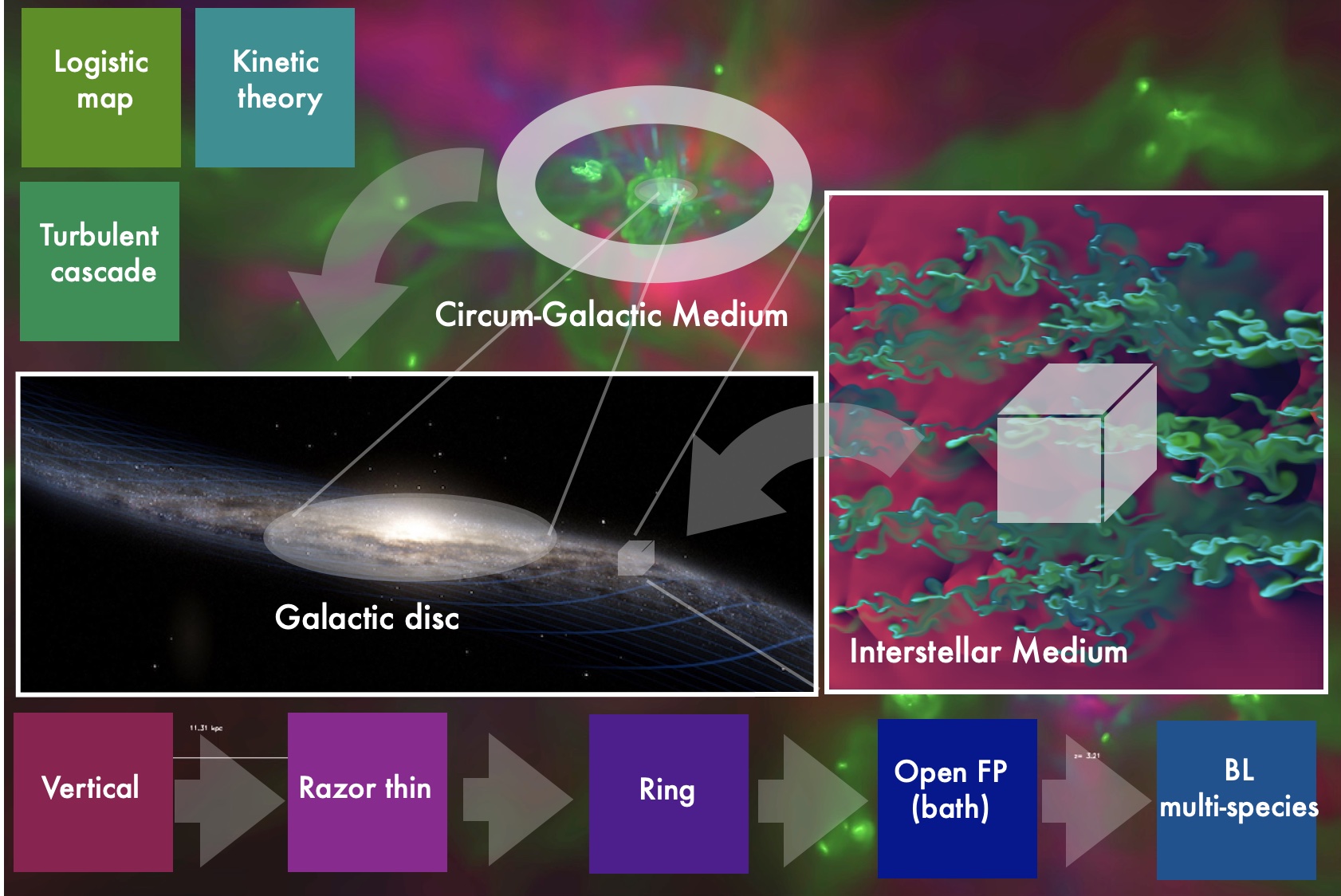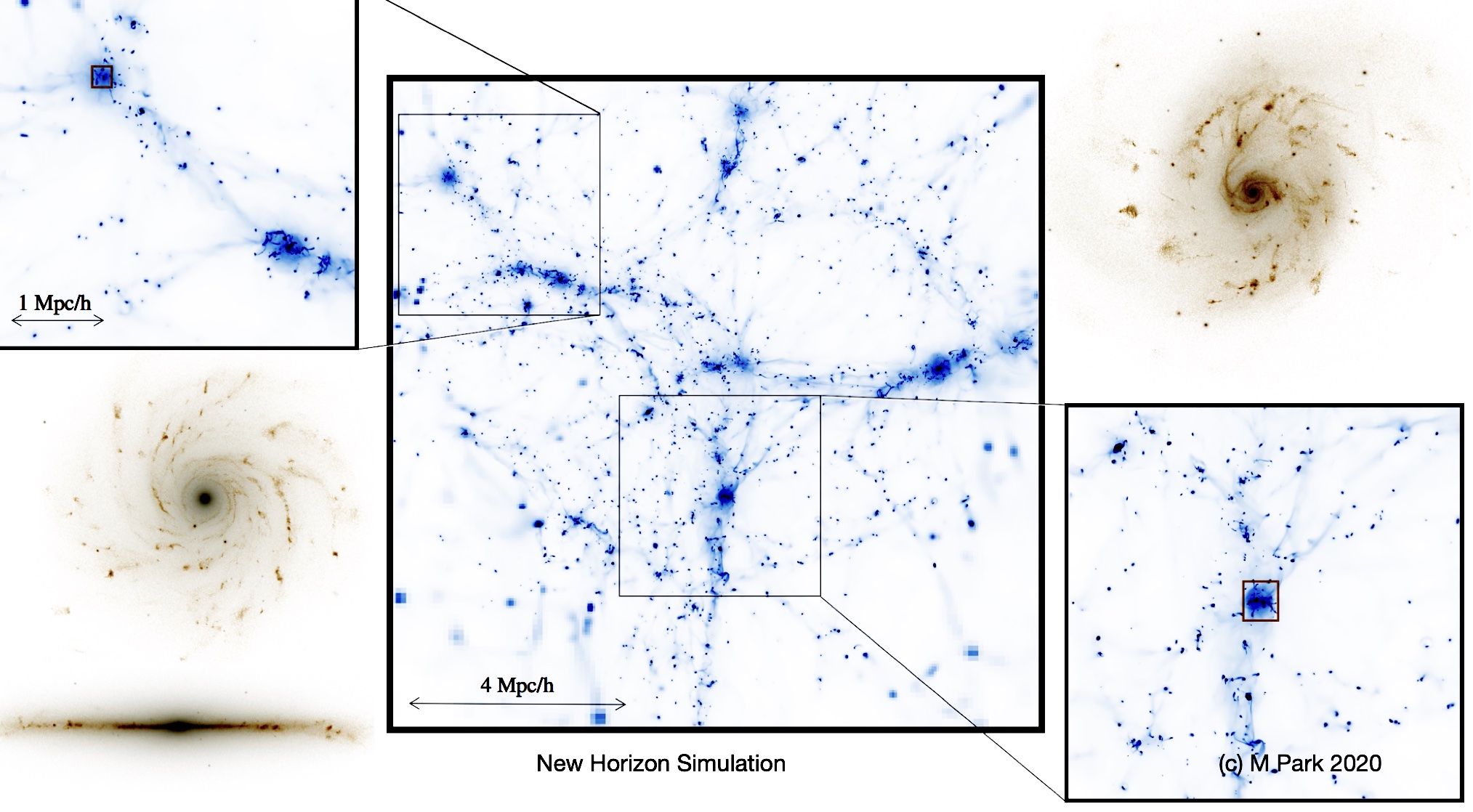Secular PhD 2024
Spectral properties of the galactic cosmic environment: quantification and implications for secular evolution.
Astrophysical context
Most stars are born in stellar disks. Major mergers destroy some of these disks recurrently in the history of the Universe, but some have survived until today, including our own Milky Way. Understanding the long-term survival of these stellar disks is therefore an essential ingredient of modern cosmology. The stabilization of the thickness of disks (thin and thick) in our Galaxy is also a dynamical problem that has recently been revived in the light of recent astrometric surveys. Star formation generally occurs on the circular (non intersecting) orbits of the gas, so young stars typically form a very thin disk. However, chemo-dynamic observations of old Milky Way stars have all shown that thick disks are also very common. The simultaneous formation of thin and thick stellar disks (S0 and Sc galaxies) is therefore an important puzzle for the theory of galaxy formation
Various dynamic mechanisms, internal or external, have been proposed to explain the observed thickening or rejuvenation, but their respective impacts and roles remain to be quantified. Some major violent events contribute to the extended vertical distribution of stars in disks: accretion of galactic satellites, major mergers of gas-rich systems, or even gravitational instabilities in massive turbulent disks. Violent mergers certainly have a strong impact on galactic structure, but the thickening of stellar disks could also result from the slow and continuous heating of pre-existing thin disks, through multiple minor mergers or internal secular processes. The induced density waves may also increase their dispersion in velocity, which can be converted into vertical motion via deflections on giant molecular clouds. The corresponding radial migration will also play an important role in their secular evolution.
The epoch of cosmic environment settling allows secular resonant processes to take over to define the morphology of galaxies (bar formation, radial migration, disk heating and thickening, etc.). These discs are cold and therefore fragile dynamical systems for which rotation provides an important reservoir of free energy, and where orbital resonances play a key role. The availability of this free energy leads to a strong amplification of certain stimuli, with the net result that even a small disturbance can in principle lead to disks evolving towards substantially distinct quasi-equilibria. These disks are furthermore immersed in various sources of perturbations, ranging from fluctuations coming from the cosmic environment, stochastic cosmic infall, shot noise coming from the finite number and short life span of giant molecular clouds in the interstellar medium, to globular clusters and substructures in orbit around the galaxy. Spiral arms and central bars provide other sources of coherent stimulation. The cosmic history of galactic disks must therefore include the common responses to all these various stimuli (internal and external).

Upshot
This thesis will focus on measuring the dynamical state and cosmic environment of thin galactic disks. This will involve quantifying the mean field, the actions and the distribution function of the galactic disks extracted from the cosmological simulation NewHorizon in order to carry out a statistical analysis (ensemble mean, cosmic variance). It will also be necessary to characterise the spectral properties of the galactic cosmic environment (power spectrum of the fluctuations in the force field induced by feedback and turbulence in the disc). Secondly, the induced orbital scattering will be quantified independently in the simulation. The implementation of the corresponding kinetic equation will be the subject of further work. A large deviation approach could also be used to predict the variance observed in the simulations.
Requirement
Strong interest in numerical simulations, dynamics, statistical work.
Framework
The PhD will be supervised Christophe Pichon (IAP, Paris) as part of the SEGAL ANR (www.secular-evolution.org).
References
- The late 2024 presentation and the corresponding 60 minutes video (in english).
- This funding application
- This other ERC funding application
- The late 2022 presentation and the corresponding 15 minutes video (in english).
- An (early) 2022 presentation and the corresponding 30 minutes video (in english) which gives a bit more details about the mathematics
- This longer (45 minutes) 2021 talk and presentation video (in english)
- This 2020 presentation and the corresponding short video (in english)
- This general audience video (in french)







